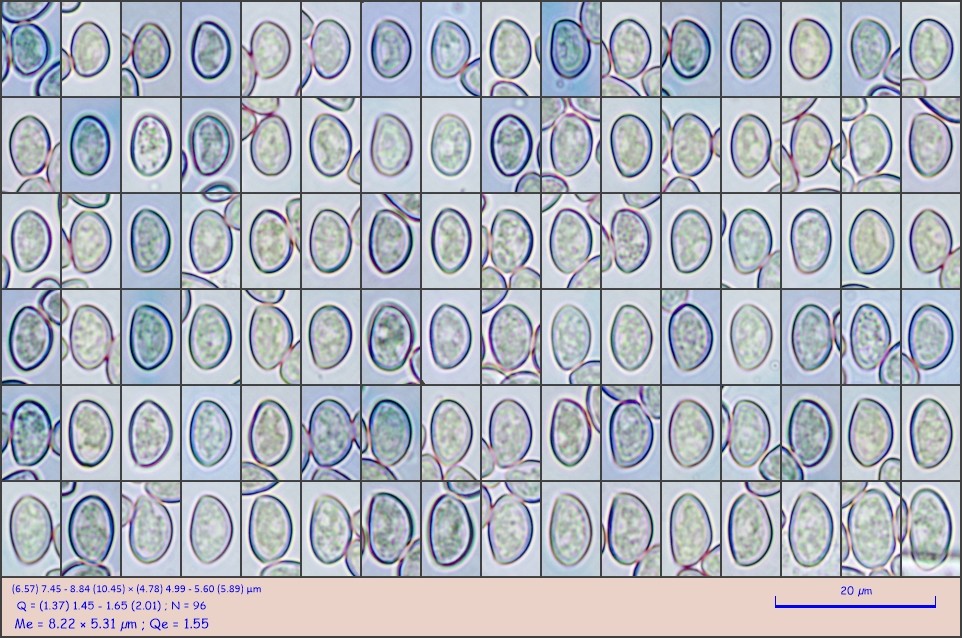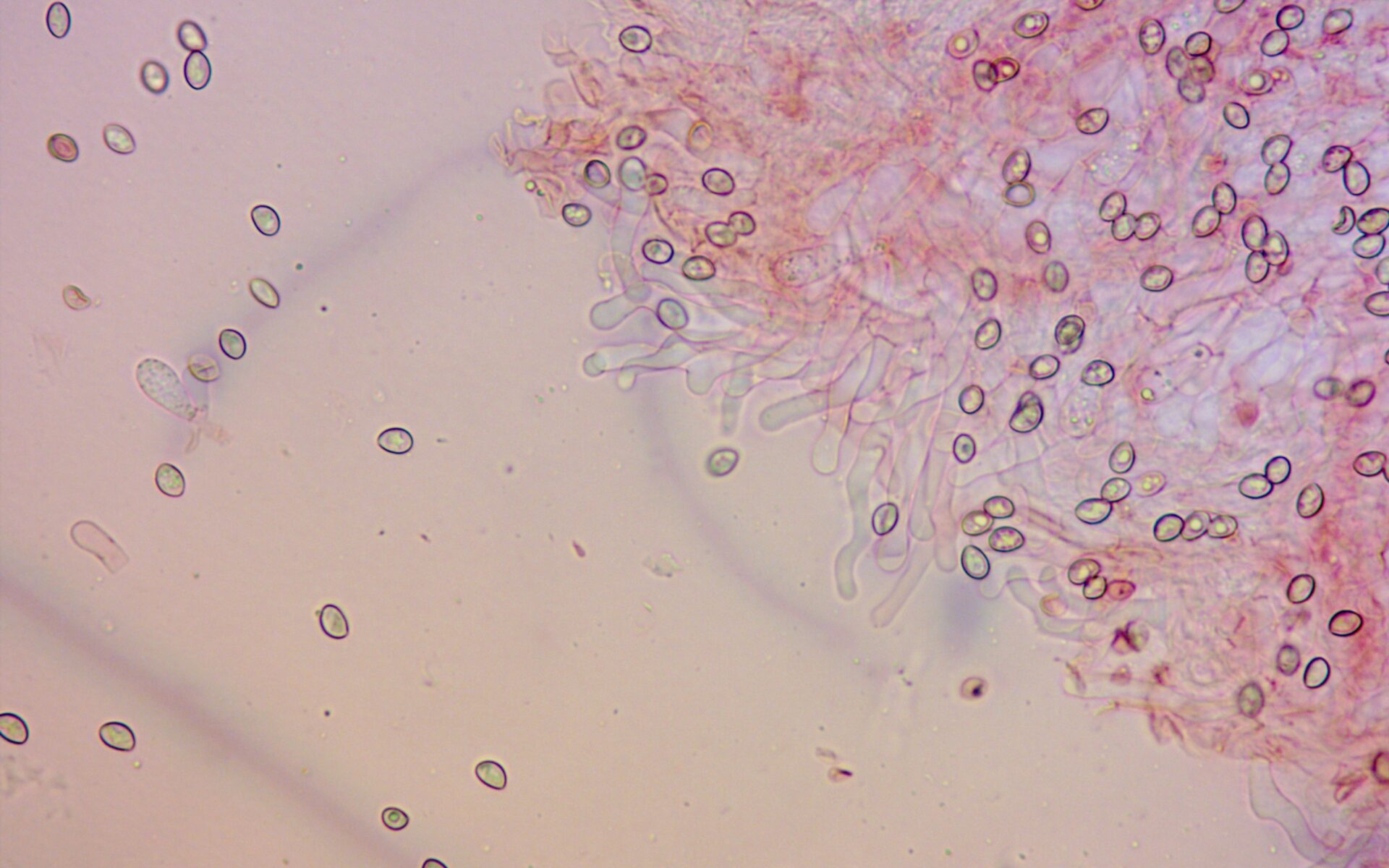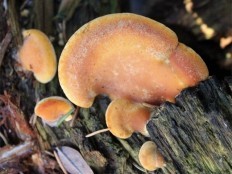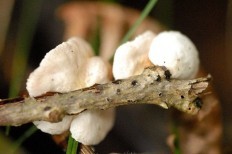Contents
Soft crepidot (Crepidotus mollis)
- Division: Basidiomycota (Basidiomycetes)
- Subdivision: Agaricomycotina (Agaricomycetes)
- Class: Agaricomycetes (Agaricomycetes)
- Subclass: Agaricomycetidae (Agaricomycetes)
- Order: Agaricales (Agaric or Lamellar)
- Family: Inocybaceae (Fibrous)
- Rod: Crepidotus (Крепидот)
- Type: Crepidotus mollis (soft crepidot)
- Milk agaric Scopoli (1772)
- Agaric wall Scopoli (1772)
- Soft agaric Schaeffer (1774)
- Agaricus canescens Batsch (1783)
- Gelatinous agaric JF Gmelin (1792)
- Agaricus violaceofulvus Vahl (1792)
- Dendrosarcus alni Paulet (1808)
- A soft crepidopus (Schaeffer) Gray (1821)

Actual name Crepidotus mollis (Schaeffer) Staude (1857)
Etymology of generic and specific epithets from Crepidotus m, Crepidot. From crepis, crepidis f, sandal + ούς, ωτός (ous, ōtos) n, ear.
mollis (lat.) – soft, tender, flexible.
Fruit body cap sessile, semicircular, kidney-shaped in young mushrooms in a circle, then shell-shaped fan-shaped, from pronouncedly convex to convex-prostrate, prostrate, attached sideways to the woody substrate. At the point of attachment, there is often a long-lasting rounded bulge. The edge of the cap is slightly tucked up, sometimes uneven, wavy, with age and with high humidity it can be slightly translucent. The surface is gelatinous, smooth, matte, sometimes covered with darker small sparse hairs or scales. The color of the surface is quite variable – from light yellow fawn to yellow-orange and even brown shades. No wonder the second popular name for the mushroom is chestnut crepidot. The gelatinous cuticle is elastic and separates quite easily.
The cap size is from 0,5 to 5 cm, under favorable growth conditions it can reach 7 cm.
Pulp fleshy elastic. Color – shades from light yellow to beige, cream, the color does not change on the break.
No distinct odor or taste. Some sources indicate the presence of a sweetish aftertaste.
Hymenophore lamellar. The plates are fan-shaped, radially oriented and adherent to the place of attachment to the substrate, frequent, narrow, forked with a smooth edge. There are short plates that do not reach the hypothetical stem. The color of the plates in young mushrooms is white, light beige, with age, as the spores mature, it acquires a brownish tint. In very old specimens, the hymenophore may have reddish-brown spots at the base.
Leg in young mushrooms, the rudimentary is very small, the same color as the plates, or completely absent.
Microscopy
Spore powder is ocher, brownish.
Spores (6,2) 7-8,5 × 4-5,3 µm, ellipsoid, slightly asymmetric, thin-walled, smooth with a relatively thick wall, light yellow, almost colorless, tobacco-brown in mass.

Basidia 18–30 × 6–9 µm, club-shaped, with granular contents up to 30 µm in size, mostly 4-spored, but there are also two-spored ones, without a clasp at the base.
Cheilocystidia 25 – 65 × 5 – 10 µm. cylindrical, bottle-shaped or bag-shaped.

Pileipellis is formed by a thin layer of cylindrical cells, sometimes slightly curved.
Soft crepidote is a saprotroph on trunks and deadwood of deciduous trees. Often grows in large groups on wood of many species, including linden, aspen, maple, poplar, alder, beech, oak, plane tree, much less often on conifers (pine), promotes the formation of white rot. Sometimes settles on living trees. Found everywhere from May to October. Peak fruiting – June – September. The distribution area is the temperate climatic zone of Europe, North America, Our Country. Recorded finds in Africa, South America.
Low-value conditionally edible mushroom. Some sources indicate some medicinal properties, but this information is fragmentary and unreliable.

Beautifully scaled crepidot (Crepidotus calolepis)
– in general, it is very similar, differs in the presence of scales on the surface of the cap, microscopically – in larger spores.

Orange oyster mushroom (Phyllotopsis nidulans)
– is distinguished by a bright orange color of the cap and the absence of a gelatin-like cuticle, as well as a pronounced smell, unlike soft crepidot, which has almost no smell.

Crepidot variable (Crepidotus variabilis)
– smaller in size, the plates are noticeably less frequent, the surface of the cap is not gelatinous, but felt-pubescent.
- Agaricus babalinus Persoon (1828)
- Agaricus alveolus Lasch (1829)
- Pleuropus mollis (Schaeffer) Zawadzki (1835)
- Agaricus cheimonophilus Berkeley & Broome (1854)
- Crepidotus mollis (Schaeffer) Staude (1857)
- Crepidotus alveolus (Lasch) P. Kummer (1871)
- Agaricus ralfsii Berkeley & Broome (1883)
- Sticking agaric Peck (1884)
- Crepidotus herens (Peck) Peck (1886)
- Crepidotus mollis var. alveolus (Lasch) Quélet (1886)
- Crepidotus cheimonophilus (Berkeley & Broome) Saccardo (1887)
- Crepidotus ralfsii (Berkeley & Broome) Saccardo (1887)
- Derminus mollis (Schaeffer) J. Schröter (1889)
- Derminus cheimonophilus (Berkeley & Broome) Hennings (1898)
- Derminus haerens (Peck) Hennings (1898)
- Derminus alveolus (Lasch) Hennings (1898)
- Crepidotus bubalinus (Persoon) Saccardo (1916)
- Crepidotus alabamensis Murrill (1917)
Photo: Sergey.









